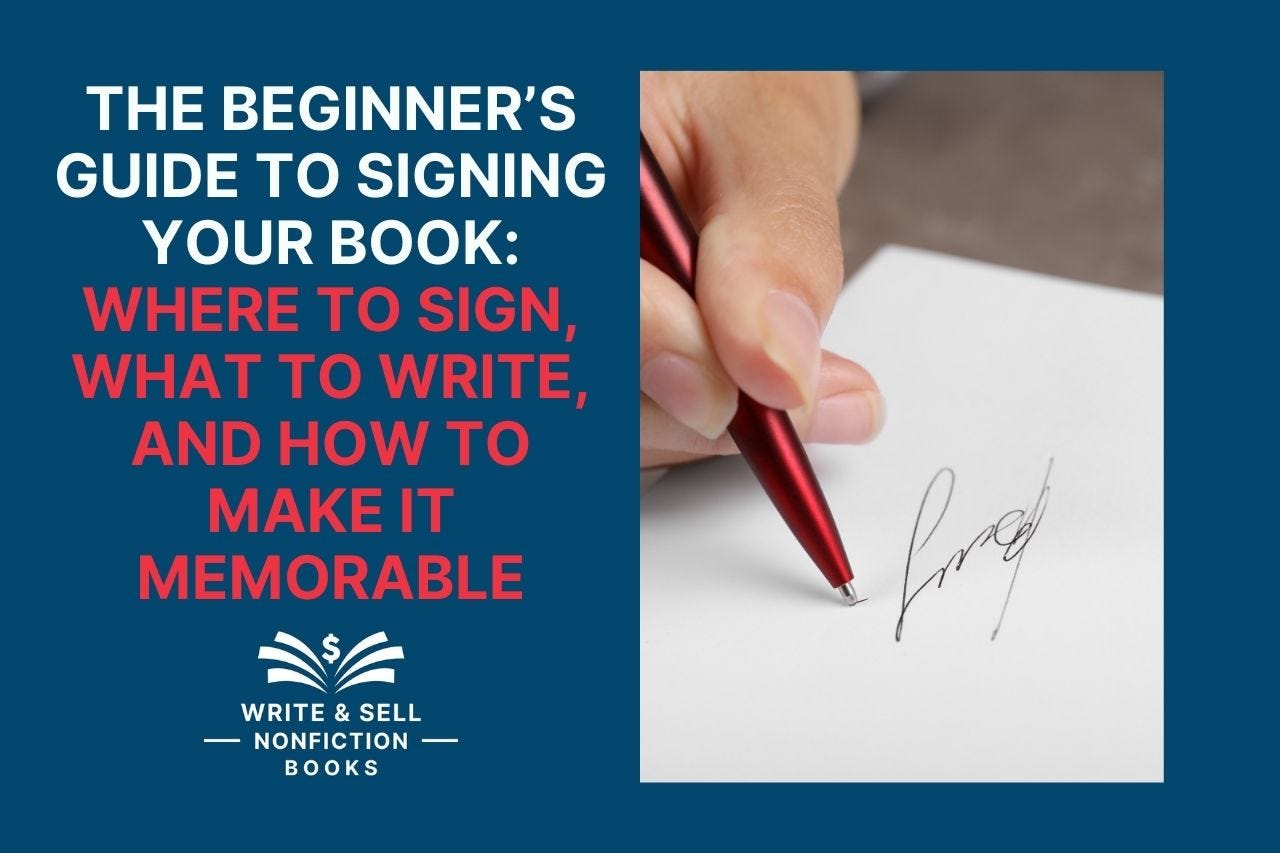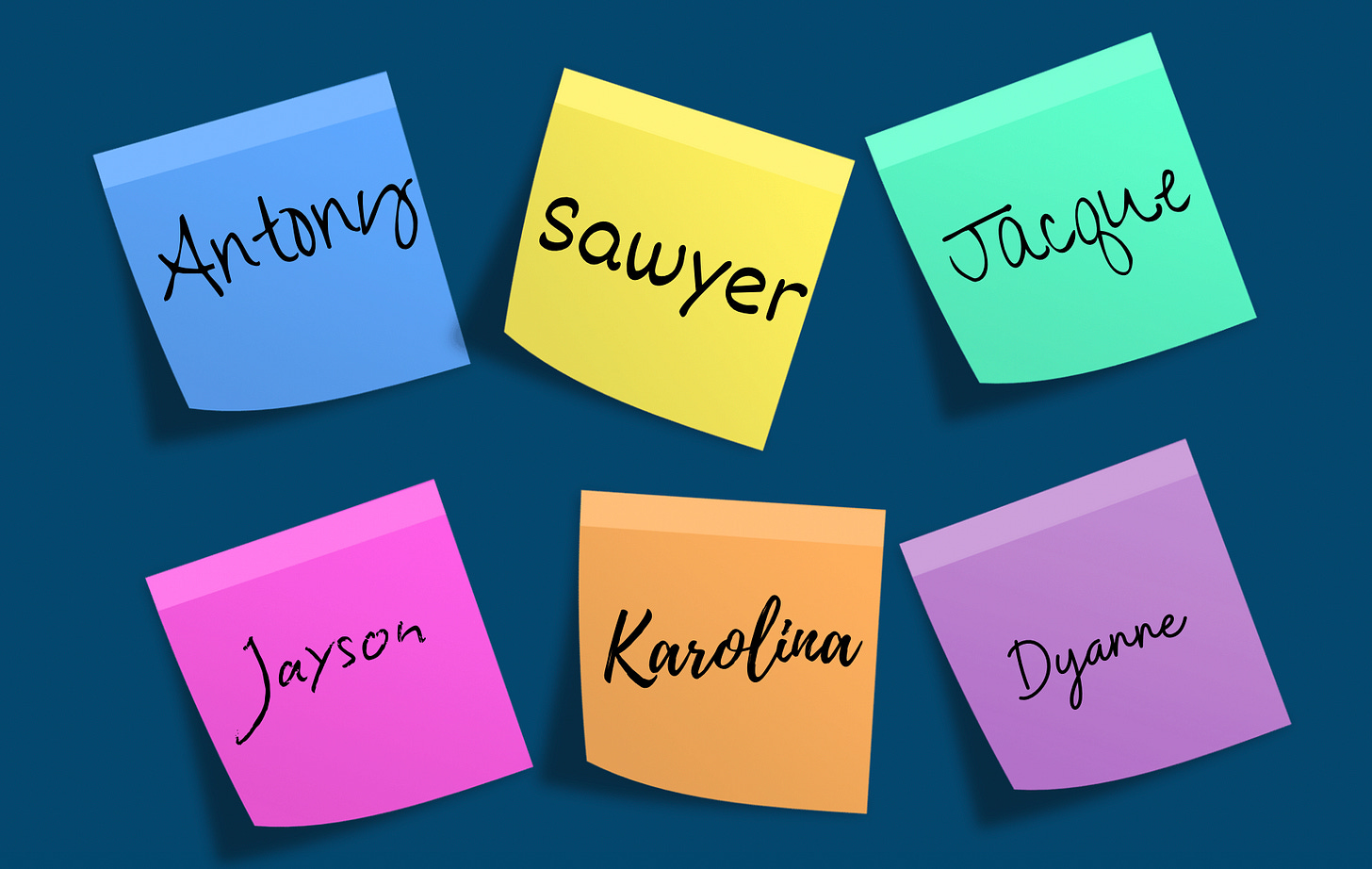The Beginner’s Guide to Signing Your Book
Where to sign, what to write, and how to make it memorable
Dear Fellow Book Creators,
When you publish your book, people will ask you to sign it.
At a launch event, a local talk, even in a coffee shop when a friend pulls out their copy — and if you haven’t thought about it ahead of time, the moment can feel awkward.
Here’s what to know so you’re ready.
✍️ Where to Sign
Most authors sign on the title page (the one with your book’s title and your name). That way your signature is directly connected with your book and easy to find.
Some authors use the first blank page or the half-title page (which includes only the title, without a subtitle). Either works — just pick one and stick with it.
🔏 Should You Use Your Real Signature?
You’ve got two options:
1. Use your everyday signature.
This is what most authors do. It’s quick, authentic, and it feels personal. But keep in mind — if your “official” signature is also what you use on checks or legal documents, you may want to tweak it slightly so you’re not giving away your exact legal autograph dozens (or hundreds) of times.
2. Create a “book signature.”
Some authors develop a variation just for signing books. It might be a stylized version of their name, their initials with a flourish, or their name paired with a small doodle or symbol. The advantage? It keeps your legal signature private and gives you a consistent, recognizable “author mark.”
📝 What to Write
There are two common approaches:
1. Signature only
This is simple, timeless, and collector-friendly. Many bestselling authors (Malcolm Gladwell, James Clear) often stick with just their name.
2. Signature + short message.
Other authors like to add a brief inscription alongside their name. This can make the book feel more personal and memorable, especially at events or when signing for friends and family.
Examples of short messages:
Simple & classic: “Best wishes, [Your Name]”
Encouraging: “Keep chasing curiosity!” (great for knowledge-sharing books)
Personalized: “To Sarah — thanks for your support!”
Quirky or thematic: A history writer might use “Onward to the past,” while a productivity writer might sign “To your next big win.”
Tip: Jot down 2–3 phrases that feel natural and tie into your book’s theme.
Personalization or Not?
Some authors love adding personal notes, while others stick to just their name. Both approaches are valid. Personal notes create a stronger connection with the reader, but plain signatures tend to hold better resale value.
Many bestselling nonfiction authors (like Ryan Holiday) offer both: signature-only copies for collectors, and personalized inscriptions when readers request them. Occasionally, he adds unique notes for limited editions, making those especially valuable.
Collector’s Note
A book with just the author’s signature is usually more valuable on the resale market than one inscribed to a specific person. If you think your book might one day be collectible, consider offering clean signatures at public events and saving longer, personalized notes for close supporters.
📌 Other Details to Think About
Date or no date?
Some authors add the date, others don’t. Dating a copy can be fun for launch events (it marks the moment in time), but you don’t have to.
Different occasions, different notes
Launch events – quick, friendly messages.
Friends & family copies – more heartfelt, personal notes.
Gift copies – tailored to the recipient. (“Happy Retirement, enjoy your next chapter!”)
Signing in bulk
If you’re asked to sign a big stack, don’t overthink it. Stick with your go-to phrase and pace yourself. A comfortable pen helps!
Pen choice
Use a good pen that won’t smudge. Black or blue ink is most common, but you can match your book’s cover color for flair. (Most print-on-demand paperbacks use uncoated paper, so you’re safe. But if you’re signing a glossy, photo-heavy book like a cookbook or travel guide, test your pen first since some inks can smear.)
Double-check names
Nothing feels worse than handing someone a signed copy with their name misspelled. At events, many authors keep a stack of sticky notes — readers write their name clearly, and the note gets stuck on the page to be signed. Even if you’re just signing for one person, it’s perfectly fine to say, “Can you spell your name for me?” People appreciate the care you take to get it right.
💡 Inspiration from Other Authors
Nonfiction authors take very different approaches — and that’s good news. It means you can choose a style that feels natural to you:
Malcolm Gladwell: Keeps it very simple, usually just his name.
Elizabeth Gilbert: Adds warm, personal notes that reflect her book’s message.
Brené Brown: Uses short encouragements like “Courage is contagious.”
James Clear (Atomic Habits): Neat and professional, usually just his name.
Cal Newport (Deep Work): Simple dedication such as “Best wishes” or his signature alone.
Ryan Holiday (The Daily Stoic, Stillness Is the Key): Offers both — signature-only copies for collectors, and personalized inscriptions when readers request them. Occasionally adds unique messages in limited editions.
Cookbook authors: Often add “Happy cooking!” or “Enjoy every bite!”
Travel writers: Personalize with lines like “Here’s to your next adventure” or “Keep exploring.”
Business & leadership authors: Use motivational phrases like “To your continued success” or “Lead boldly.”
Science/knowledge authors: Add playful nods to curiosity such as “Keep asking why” or “Stay curious.”
Children’s authors: Sometimes include doodles or stickers to delight young readers.
As you can see, nonfiction authors run the full spectrum, from plain signatures to playful flourishes. The best choice is the one that matches your voice.
✅ Quick Win for This Week
Grab a notebook and practice signing your name 10–15 times. Try out a couple of short messages. Notice what feels natural and what looks good on the page. When the moment comes, you’ll be ready — and confident.
📚 Final Thoughts
A book signature isn’t about perfect handwriting — it’s about creating a personal connection with your reader. Whether you keep it simple, playful, or thematic, remember: every time someone asks you to sign, it’s a small celebration of the fact that you’re now a published author.
See you next Saturday,
Marianne



